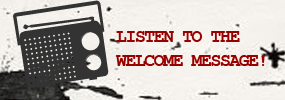
I like cook books that can be read. Yes, colour photographs in a cook book are always interesting to study. Often, though, they don’t always they make the dishes look appealing. Love Soup doesn’t have colour photographs (there are some cheery two-colour illustrations by Annika Huett) and it’s none the worse for it. This is because it’s cook book to read, browse and savour. Anna Thomas’s writing style is friendly and straightforward. “Cooking was always fun,” she writes. “I never cooked professionally, so I always cooked only what I felt like cooking, for the people I loved.” This sentiment is clearly apparent throughout the book.
The recipes are a mixture of traditional (e.g., “Old-fashioned split pea soup”) and adventurous (e.g., Spicy Indonesian Yam and Peanut Soup). There are also recipes for “Big soups and stews” and “Hummus and company.” I haven’t made any of the recipes. I cannot write about whether they work and what the food tastes like. But I can say that looking through this book I’m inspired. It is one of those rare cook books. I may not ever cook any of the recipes. But I can honestly say that this book will inspire me to make even better soups just by thumbing through the pages and savouring what it has to share.




